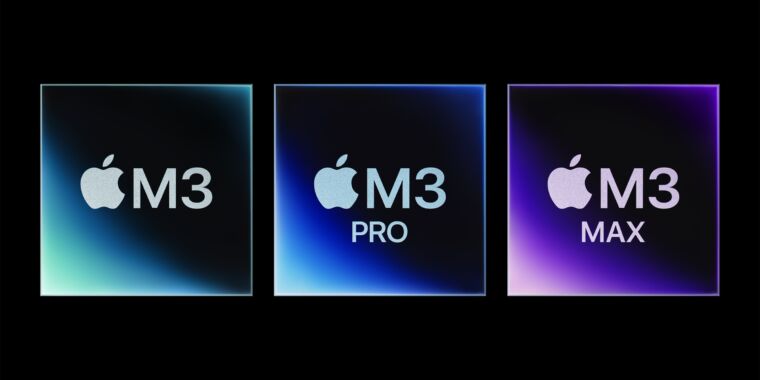-
The new 13-inch iPad Air with the Apple M2 processor inside.
Andrew Cunningham -
In portrait mode. The 13-inch model is a little large for dedicated tablet use, but if you do want a gigantic tablet, the $799 price is appealing.
Andrew Cunningham -
The Apple Pencil Pro attaches, pairs, and charges via a magnetic connection on the edge of the iPad.
Andrew Cunningham -
In the Magic Keyboard. This kickstand-less case is still probably the best way to make the iPad into a true laptop replacement, though it’s expensive and iPadOS is still a problem.
Andrew Cunningham -
The tablet’s USB-C port, used for charging and connecting to external accessories.
Andrew Cunningham -
Apple’s Smart Folio case. The magnets on the cover will scoot up and down the back of the iPad, allowing you a bit of flexibility when angling the screen.
Andrew Cunningham -
The Air’s single-lens, flash-free camera, seen here peeking through the Smart Folio case.
Andrew Cunningham
The iPad Air has been a lot of things in the last decade-plus. In 2013 and 2014, the first iPad Airs were just The iPad, and the “Air” label simply denoted how much lighter and more streamlined they were than the initial 2010 iPad and 2011’s long-lived iPad 2. After that, the iPad Air 2 survived for years as an entry-level model, as Apple focused on introducing and building out the iPad Pro.
The Air disappeared for a while after that, but it returned in 2019 as an in-betweener model to bridge the gap between the $329 iPad (no longer called “Air,” despite reusing the first-gen Air design) and more-expensive and increasingly powerful iPad Pros. It definitely made sense to have a hardware offering to span the gap between the basic no-frills iPad and the iPad Pro, but pricing and specs could make things complicated. The main issue for the last couple of years has been the base Air’s 64GB of storage—scanty enough that memory swapping doesn’t even work on it— and the fact that stepping up to 256GB brought the Air too close to the price of the 11-inch iPad Pro.
Which brings us to the 2024 M2 iPad Air, now available in 11-inch and 13-inch models for $599 and $799, respectively. Apple solved the overlap problem this year partly by bumping the Air’s base storage to a more usable 128GB and partly by making the 11-inch iPad Pro so much more expensive that it almost entirely eliminates any pricing overlap (only the 1TB 11-inch Air, at $1,099, is more expensive than the cheapest 11-inch iPad Pro).
I’m not sure I’d go so far as to call the new Airs the “default” iPad for most buyers—the now-$349 10th-gen iPad still does everything the iPad is best at for less money, and it’s still all you really need if you just want a casual gaming, video streaming, and browsing tablet (or a tablet for a kid). But the M2 Air is the iPad that best covers the totality of everything the iPad can do from its awkward perch, stuck halfway between the form and function of the iPhone and the Mac.
Not quite a last-gen iPad Pro
The new iPad Airs have a lot in common with the M2 iPad Pro from 2022. They have the same screen sizes and resolutions, the same basic design, they work with the same older Magic Keyboard accessories (not the new ones with the function rows, metal palm rests, and larger trackpads, which are reserved for the iPad Pro), and they obviously have the same Apple M2 chip.
Performance-wise, nothing we saw in the benchmarks we ran was surprising; the M2’s CPU and (especially) its GPU are a solid generational jump up from the M1, and the M1 is already generally overkill for the vast majority of iPad apps. The M3 and M4 are both significantly faster than the M2, but the M2 is still unquestionably powerful enough to do everything people currently use iPads to do.
That said, Apple’s decision to use an older chip rather than the M3 or M4 does mean the new Airs come into the world missing some capabilities that have come to other Apple products announced in the last six months or so. That list includes hardware-accelerated ray-tracing on the GPU, hardware-accelerated AV1 video codec decoding, and, most importantly, a faster Neural Engine to help power whatever AI stuff Apple’s products pick up in this fall’s big software updates.
The 13-inch Air’s screen has the same resolution and pixel density (2732×2048, 264 PPI) as the last-generation 12.9-inch iPad Pro. And unlike the 13-inch Pro, which truly is a 13-inch screen, Apple’s tech specs page says the 13-inch Air is still using a 12.9-inch screen, and Apple is just rounding up to get to 13.
The 13-inch Air display does share some other things with the last-generation iPad Pro screen, including P3 color, a 600-nit peak brightness. Its display panel has been laminated to the front glass, and it has an anti-reflective coating (two of the subtle but important quality improvements the Air has that the $349 10th-gen iPad doesn’t). But otherwise it’s not the same panel as the M2 Pro; there’s no mini LED, no HDR support, and no 120 Hz ProMotion support.



